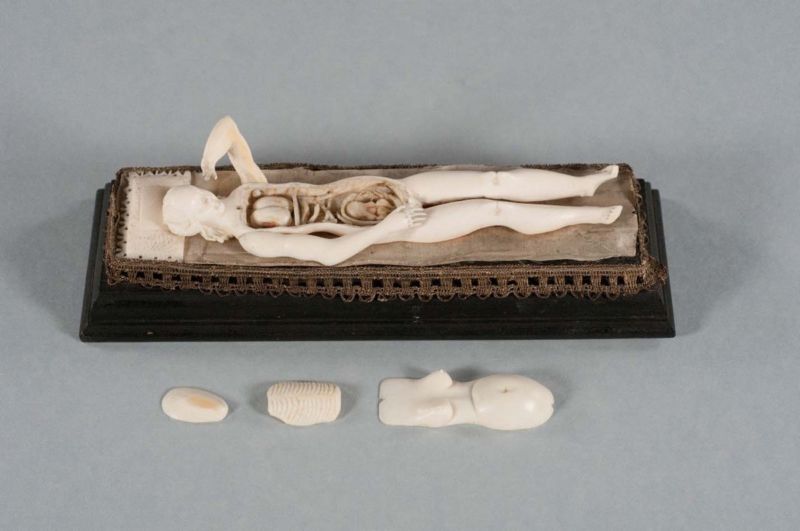CT scans confirm 17th-century medical mannikins are mostly made of ivory

Enlarge / An ivory manikin after removal of the abdominal and chest wall, ribs, and part of the uterus. Internal organs such as the lungs, intestines, as well as a fetus inside the uterus are visible. (credit: F.R. Schwartz/Duke University/RSNA)
Researchers at Duke University have completed digital scans of small medical manikins and identified the materials used to make them. They will be presenting their findings next week at the annual meeting of the Radiological Society of North America (RSNA) in Chicago.
These are not the department-store mannequins familiar to most of us today. Rather, they are tiny, intricately carved anatomical figurines dating back centuries. According to the New York Academy of Medicine, there was an explosion of interest in three-dimensional anatomical models in the mid-16th century, typically made of wax molds or carved from wood or ivory. The manikins likely emerged as a result of this trend. Scholars have pegged their origins to Germany in the late 1600s or early 1700s, possibly created in the Nuremberg workshop of sculptor Stephan Zick, known for his ivory models of human ears and eyeballs.
The figurines measure between 12 to 24 centimeters (4 to 9 inches) and have movable arms. The torso has a lid that can be removed to reveal tiny, intricately carved organs within the cavity. The removable organs include lungs, heart, intestines, bladder, kidneys, stomach, liver, and pancreas. There are some male and female pairs, but most of the manikins are pregnant female figures, with a tiny carved fetus attached to the uterus with a red cord.
Read 9 remaining paragraphs | Comments